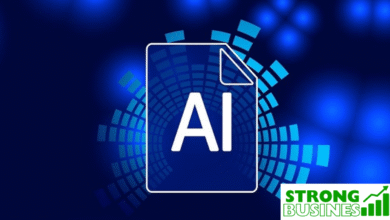AI tools for small business marketing 2025
If you’re deciding which AI tools for small business marketing 2025 can actually move the needle, here’s the short take: adoption is now mainstream, the best-in-class apps are affordable, and a simple hybrid workflow (AI + human review) beats brute-force tactics every time2. Below you’ll find top tools by category, a practical playbook to lift sales, and the key trends that matter this year.
Best AI marketing software for small businesses 2025
Use this quick matrix to pick a lean stack that covers content, social, email, SEO, leads, and analytics.
| Category | Core job | Top tools to consider | Best for |
| Content creation/copy | Blog posts, ads, product copy | Jasper, Copy.ai, Writesonic | Fast, on‑brand output |
| Social media (create, schedule, analyze) | Plan, publish, optimize | Sprout Social, SocialPilot, Buffer | Multi‑platform management |
| Email marketing & automation | Journeys, personalization, AMP | Mailchimp, ActiveCampaign, Braze, Mailmodo | Lifecycle and campaigns |
| SEO & content optimization | Research, briefs, on‑page | Surfer SEO, Semrush ContentShake, Ahrefs | Ranking and content quality |
| Lead gen & chat | Capture, qualify, outreach | Intercom, Tidio, Outreach.io | Site conversion and SDR assist |
| Analytics & BI | Insight, dashboards, forecasting | GA4, Power BI | Decision‑making at a glance |
Sources: 46
Shortlist highlights:
- OfficeChai’s 2025 roundups showcase accessible, small‑business‑friendly options across content, social, and more.
- Sprout Social details how AI now accelerates scheduling, social listening, and engagement triage with measurable time savings.
- The CMO’s expert list breaks down where AI email tools excel (personalization, workflows, cross‑channel).
- AI SEO tool guides surface leaders for briefs, clustering, and SERP‑aligned optimization7.
Why AI tools matter for small business marketing in 2025
- Adoption and payoff: Most SMB teams are using AI to do more with less, citing productivity gains and faster output; this levels the playing field with bigger brands2.
- Social and content velocity: Social teams that lean on AI for ideation, scheduling, and analytics move faster and optimize decisions with data—not guesswork8.
- Email growth levers: Modern AI email suites improve segmentation, send‑time optimization, and behavior‑based journeys that convert without adding headcount.
Bottom line: AI isn’t replacing strategy; it’s the force multiplier for it.
How to use AI for small business marketing in 2025 (step‑by‑step)
1) Build a weekly content engine (3 hours/week)
- Use Jasper or Copy.ai to draft a blog, 3–5 social posts, ads, and a newsletter snippet around one topic. Then human‑edit for voice and proof points.
- Optimize the post with Surfer SEO or Semrush ContentShake and publish with internal links to key pages.
- Schedule social variants in Sprout Social or SocialPilot, and let AI suggest best post times and hashtags.
2) Automate a simple lifecycle funnel (set once, tweak monthly)
- In Mailchimp or ActiveCampaign:
- Welcome series (3 emails) → educational nurture (2–3 emails) → soft offer.
- Use AI to tailor subject lines, copy variants, and send‑time optimization; keep humans in the loop for tone and compliance.
- Add a chatbot (Intercom/Tidio) to answer FAQs, capture emails, and route hot leads to live chat or a demo booker11.
3) Turn traffic into leads with smart prompts and chat
- Deploy conversational prompts (“Ask us which plan fits your team”) and AI chat routing for qualification.
- For outbound, pair targeted lists with AI‑assisted sequencing in Outreach and personalize first lines manually to avoid generic outreach.
4) Measure what matters
- In GA4 and your social dashboard, track: content CTR, newsletter opt‑ins, lead quality, and assisted conversions. AI surfaces trends; you decide the next bets4.
This hybrid workflow reflects what high‑performing teams report: AI accelerates scaffolding and analysis; humans add judgment, brand voice, and originality9.
Affordable AI apps for small companies
You don’t need an enterprise budget. Several credible lists emphasize budget‑friendly tools for content, social, visuals, and automation that small businesses can deploy in days14. Even starter plans from Copy.ai, Predis.ai, Buffer, and Canva cover a surprising amount of ground for creation, scheduling, and ad creatives14.
AI marketing trends for small businesses in 2025
- Dynamic, context‑aware content: Generative systems adapt messaging in real time by audience and moment. Expect more personalized experiences across channels.
- Social at AI speed: Over 60% of marketers now use AI to personalize posts, predict performance, and triage engagement, making AI social strategy table stakes.
- Search is evolving: With AI‑generated answers in SERPs, SEO strategies must emphasize information gain, structure, and credibility that models will surface and cite6.
Translation: Aim for unique insight, airtight structure, and clear author signals—then let AI help with scale.
Guardrails: quality, oversight, and data hygiene
- Balance automation with human review. Use AI to draft, cluster, and analyze—but keep people accountable for accuracy, brand consistency, and differentiation.
- Avoid “AI spam.” Research from practitioners shows generic AI outreach reduces trust. Personalization and relevance still win—and require human context.
- Handle data with care. Review vendor data policies and limit exposure of sensitive information when connecting CRMs or uploading files to assistants.
Quick start stack by use case
- Content velocity: Jasper or Copy.ai + Surfer SEO + GA46
- Social presence: Sprout Social or SocialPilot + Buffer/Predis.ai for creative variations3
- Email growth: Mailchimp or ActiveCampaign + an AI subject line/optimization assistant
- Lead capture: Intercom/Tidio + Outreach for sequenced follow‑ups12
- Insight layer: GA4 dashboards; add Power BI when you need modeling and forecasting
FAQ: AI tools for small business marketing 2025
- What are the best AI tools to grow small business sales? Pair content (Jasper/Copy.ai), social (Sprout Social/SocialPilot), email (Mailchimp/ActiveCampaign), SEO (Surfer/Semrush), chat (Intercom/Tidio), and GA4 analytics. This stack covers awareness to conversion with measurable ROI46.
- How should I use AI for social media marketing in 2025? Use AI for ideation, scheduling, social listening, and engagement routing; keep a human voice for replies and storytelling. Teams report time savings and faster decisions with AI‑assisted workflows8.
- Are AI email tools worth it for small teams? Yes. Modern suites improve personalization, timing, and behavioral triggers without adding headcount, helping small teams run advanced lifecycle programs.
- Will AI replace my marketing team? No. The winning model is hybrid. AI accelerates drafting, analysis, and routine workflows; humans supply strategy, originality, and trust signals—especially in competitive niches2.
- Do AI SEO tools still matter with AI Overviews? More than ever. Use them to prioritize topics, structure content, and improve on‑page quality so both search engines and AI layers recognize and surface your pages15.
Conclusion
AI tools for small business marketing 2025 are less about hype and more about repeatable gains: faster content cycles, smarter social, sharper emails, and clearer decisions. Start with a lean stack, keep humans in the loop, and measure relentlessly.





